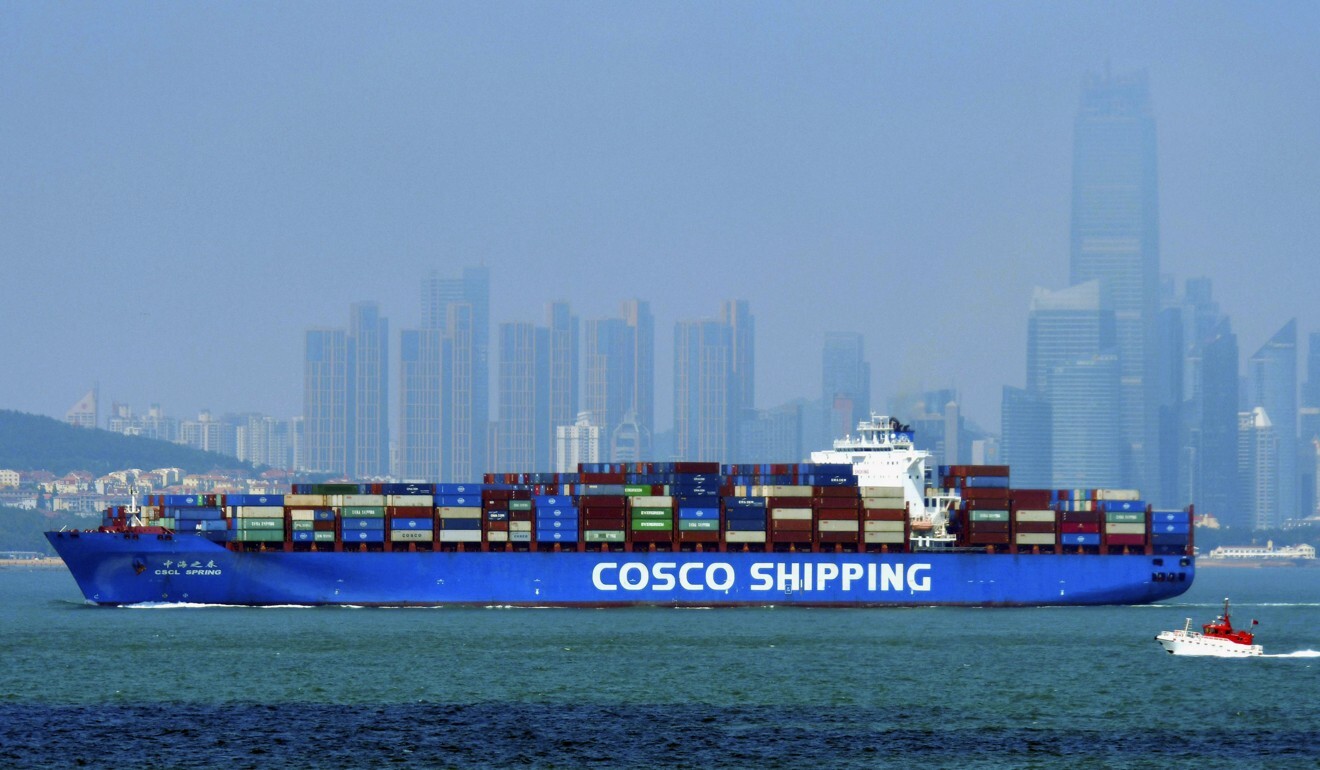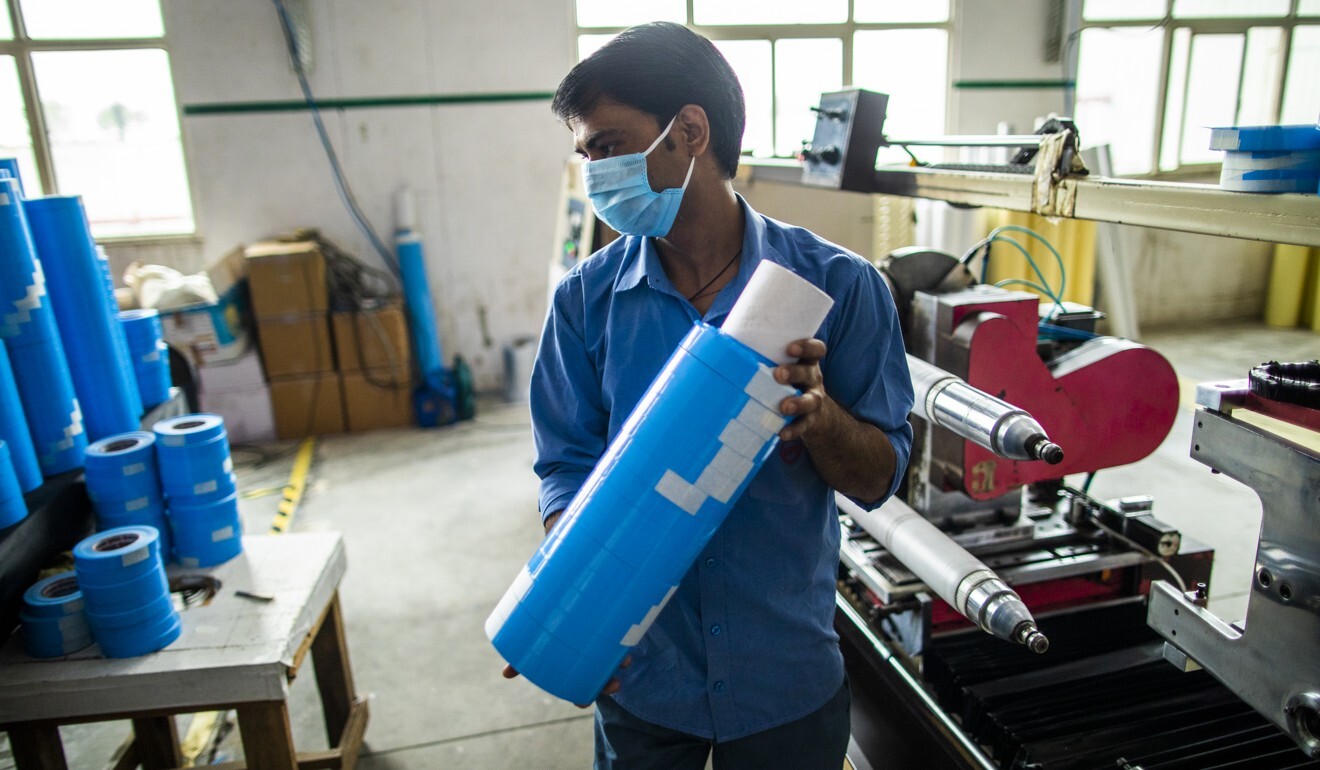
As Chinese imports boom, what happened to Modi’s ‘self-reliant’ India?
- China not only remains India’s biggest source of imports, its share of the total actually increased in the six months to September, government data shows
- Indian traders and manufacturers are struggling to end their reliance on Chinese goods partly thanks to a lack of high quality, locally made alternatives
China not only remains India’s biggest trading partner and source of imports, but according to new government data its share of the total has gone up from 13.7 per cent last financial year to 18.3 per cent in the six months to September.
Modi ramps up plan to reduce China dependence with ‘self-reliant’ campaign
Much of this has to do with the nature of India’s imports – more than half of which go towards producing finished goods – and the realisation that slogans popularised by Modi such as “vocal for local” might be easy to chant but are harder to put into practice.
Thadani’s company, Sentai Metals, imports fittings such as locks, chains and buckles from China that are used to produce high-end luxury bags, which are ultimately exported to Europe. He said he fears clients would “walk away” if he opted to offer India-made alternatives instead.
“Indian fittings are not able to match the quality of Chinese fittings. If the fittings look shabby, the whole look of the bag is ruined,” he said. “Would you feel like using a bag if the metallic brand logo on it was scratched out?”
Saurebh Potnis, whose company Fabrinox Potnis manufactures and exports foot-operated handwashing stations, finds himself in a similar predicament. He has been searching since April for a domestically made alternative to a valve he normally imports from China.
“Except none of them are able to match the quality of the Chinese-manufactured valve,” the 35-year-old said. “So we are now offering lower-priced variants of our handwashing stations with Indian valves, while offering a slightly higher-priced version with the superior Chinese valves.”

Santosh Kamble, whose Bizcraft Solutions Private Limited has the capacity to make up to 3 million bags a year, said his industry used to be dominated by Chinese manufacturers.
“All the big brands would import ready-made bags from China, while the remaining local brands would import up to 60 per cent of the materials they used,” he said. “Now imports have reduced to near zero, but only because the bag industry has been hit terribly [by the pandemic].”
Kamble, who is also president of the Dalit Indian Chamber of Commerce and Industry in Maharashtra, predicted that Chinese imports would soon bounce back “once the pandemic recedes”, and urged India’s government to make the most of the current disruption to realign global supply chains. “This is an opportunity that India needs to seize,” he said.

Doing so would require resources that increasingly seem out of New Delhi’s reach, however.
Last week, the Reserve Bank of India announced the country had entered into a technical recession “for the first time in its history”, after recording a contraction – this time of 8.6 per cent – for the second quarter in a row. Between April and June, Asia’s third-largest economy shrank by 24 per cent, official figures show.
Despite this, Modi recently claimed India’s economy was on its way to recovery and would achieve his government’s target size of US$5 trillion by 2024 from the estimated US$2.8 trillion it is worth at present. Economic forecasters at Oxford Economics, however, said on Thursday that growth would continue to stall at around 4.5 per cent until 2025.
The result is a deepening crisis for India’s traders and manufacturers, one of whom told This Week In Asia on condition of anonymity that the country’s smallest enterprises were the ones suffering the most. “The government asked us to not sack employees but offered us little relief or stimulus. Where we need substantial relief, we got a moratorium on our loans,” he said, referring to the government’s US$265 billion in economic aid announced in May.
It isn’t enough that customers ask for locally manufactured goods. Even global brands need to be convinced and incentivised to manufacture in India
While Modi’s government has repeatedly announced easy, low-cost credit for industrialists, deep stress in the country’s banking sector has meant that little in the way of financial relief is actually available.
One Mumbai-based industrialist, whose company manufactures customised equipment for the hospital sector, told of how he keeps receiving orders from both the public and private sectors on the condition that payment will only happen a few months after delivery.
“Which means that I have to fork out the money needed to procure and manufacture the equipment. But banks are refusing to lend and my clients refuse to offer substantial advances,” he said. “Despite having clients, machinery and expertise, I am not able to work. How long can this go on for?”

Kamble, of the Dalit Indian Chamber of Commerce and Industry, said more needed to be done to translate government slogans into results.
“It isn’t enough that customers ask for locally manufactured goods. Even global brands need to be convinced and incentivised to manufacture in India,” he said.
Not many are convinced that slogans alone will help achieve self-reliance. For some Indian traders like Thadani of Sentai Metals, it is hardly a novel concept.
Two decades ago, his family tried to set up a plant to manufacture the high quality fittings that they would otherwise import from China.
Who has the upper hand in the China-India border dispute?
“We got the machines, we even got Chinese personnel on board so that they could help us run the plant,” he said. But at the last minute, the project ground to a halt because the government would not issue the required licences and certificates.
The family lost millions in that failed endeavour, leaving them – like countless others like them – with little option but to continue relying on Chinese imports.

